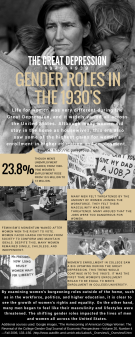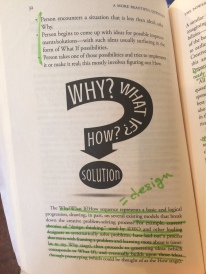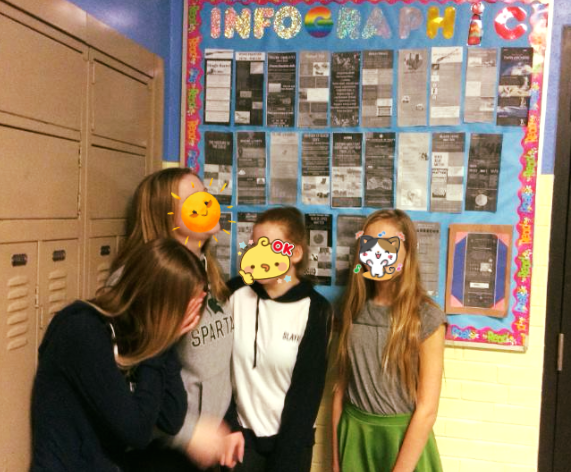Is teaching complex thinking a wicked problem? Or is the wicked problem that educators aren’t aware of the concept of complex thinking?
For the past few weeks, I have been exploring the wicked problem of teaching complex thinking.
Before getting ahead of myself, let me explain both of those terms:
Wicked Problem: “[…] wicked problems, in contrast to tame problems (such as those in mathematics, chess etc.) have incomplete, changing and contradictory requirements. Solutions to wicked problems are often difficult to realize (or maybe even recognize) because of complex interdependencies among a large number of contextually bound variables.” (Koehler & Mishra, 2008).
Complex Thinking: “People with strengths in complex thinking may be good at deeply understanding ideas and concepts, seeing connections among information from different sources, demonstrating imagination, constructing and defending arguments based on facts or evidence, taking risks with new ideas, and/or drawing inferences from limited information.” (Faces of Learning, 2016).
How Can Better Explain the Wicked Problem of Teaching Complex Thinking
To better understand what the wicked problem of teaching complex thinking and the various components of complex thinking itself, I created the following infographic: 
Research and Findings
Our research group conducted a survey of 134 individuals working in the field of education, ranging from preschool to higher education. The participants also ranged from administrators to classroom teachers and extending to support staff.
We had three important findings:
- Finding #1: 75% educators surveyed have little to no knowledge regarding complex thinking.
- Finding #2: Participants found the following teaching methods/complex thinking skills most difficult to address: Coding/computer science, authentic opportunities for student inquiry, and opportunities for student innovation.
- Finding #3: Participants found the following teaching methods/complex thinking skills most important to address: Communication skills, problem-solving skills, and student engagement with real world problems and issues.
Solutions to Our Survey Findings
We identified two solutions to address the aforementioned issues.
- Solution #1: Address teaching complex thinking in colleges of education.
- Solution #2: Allow more opportunities for student choice.
As part of my group’s presentation tackling the wicked problem of teaching complex thinking, I created the following slideshow to examine the way our Google survey results led us to the solutions we identified. Please look through the slides below for more detailed information.
Why Student Choice?
Student choice has long been argued for, and against, by educators all over the country. We believe that by allowing more student choice, students will become more invested, engaged, and creators of their own learning.
As explained in A More Beautiful Question by Warren Berger, 21st-century citizens must be self-learners, creative, and resourceful. Some education models which support these types of learners, according to Berger, include project based learning, and inquiry-based schools. These schools, which in ways mirror Montessori education, have core principles of “letting students explore, direct their own learning, and work on projects instead of taking tests,” (Berger, p.54, 2016). All of these modes of learning push students to form big, important questions to guide their own learning. Question forming techniques, similar to the methods of the aforementioned educational models all push student choice and complex questioning techniques which lead to deeper student engagement and higher engagement (Berger, 2016).
When it comes to the question of the Common Core State Standards (CCSS), these types of student-centered educational methods meet requirements of standards while still allowing freedom and flexibility in schools. As stated by Christy Howard in the article, “Engaging Minds in the Common Core: Integrating Standards for Student Engagement”, “Standards can be met through providing students with autonomy in assignments, the ability to access, analyze, and create multimedia texts and providing opportunities for students to showcase knowledge through art, inquiry, and creative writing,” (p. 49, 2016). By giving students a platform to explore, create, and question, they will deepen their understanding and their abilities to address complex problems in an increasingly complex world.
The Best Worst Ideas: How Educators Can Tackle Teaching Complex Thinking
Please take the time to explore the multimedia graphic below to learn more about how we can address the wicked problem of teaching complex thinking within our classrooms. Below, you can explore four potential teaching approaches to address complex thinking and its related parts.
The four classroom strategies you can explore below include how to provide more opportunities for authentic inquiry, genius hour/20Time, project based learning, and general student choice in assessments.
Hover over the image below to learn more about each of these strategies and what led us to our conclusions.
References
Berger, W. (2016). A More Beautiful Question: The Power of Inquiry to Spark Breakthrough Ideas. New York: Bloomsbury.
Howard, C. (2016). Engaging Minds in the Common Core: Integrating Standards for Student Engagement. The Clearing House: A Journal of Educational Strategies, Issues and Ideas, 89(2). doi:10.1080/00098655.2016.1147411
Koehler, M. J., & Mishra, P. (2008). Introducing TPCK. In AACTE Committee on Innovation and Technology (Ed.),Handbook of Technological Pedagogical Content Knowledge (TPCK) (pp. 3–29). New York: Routledge.






 I am excited to embrace a lot of what I have learned from reading
I am excited to embrace a lot of what I have learned from reading 








